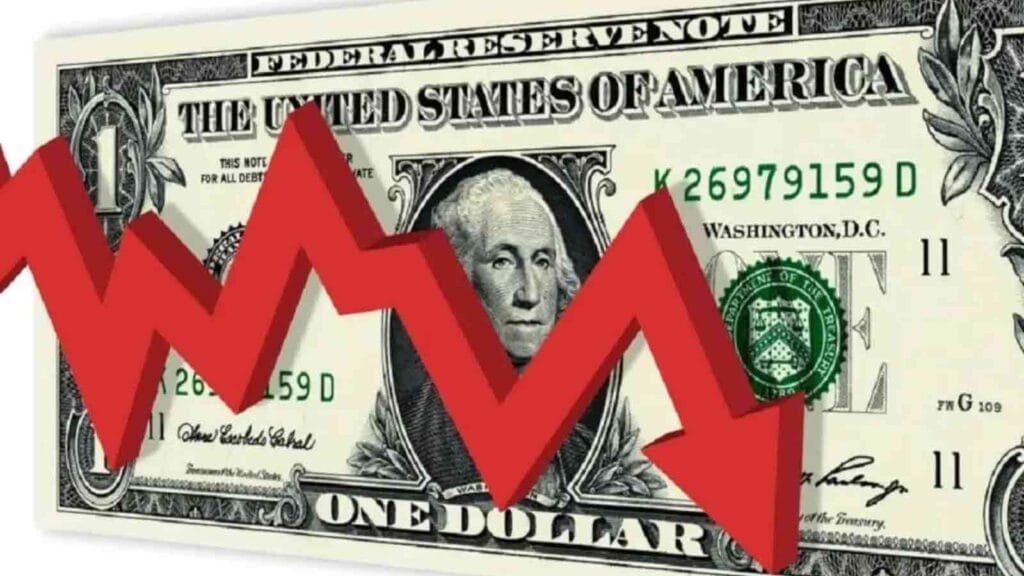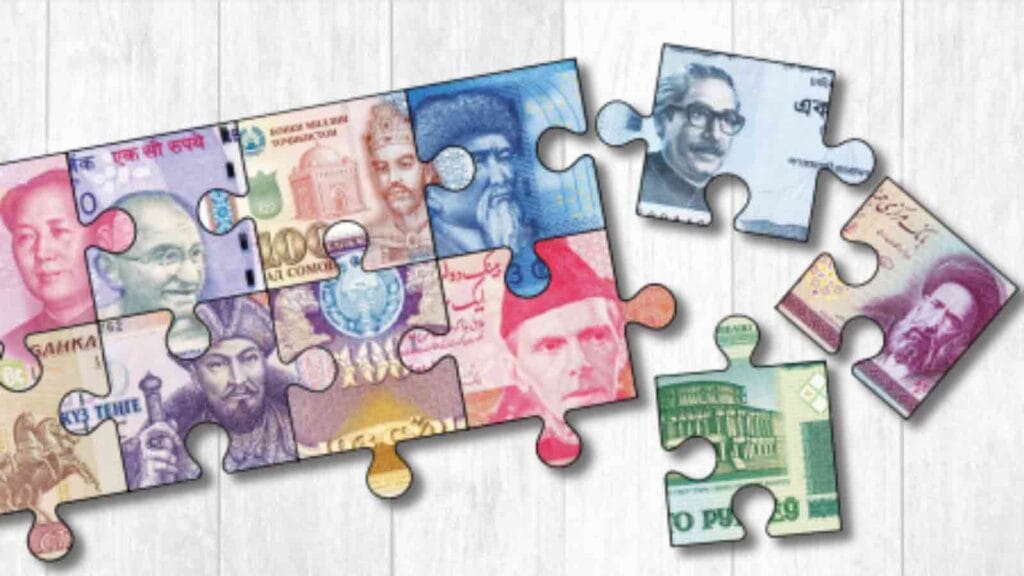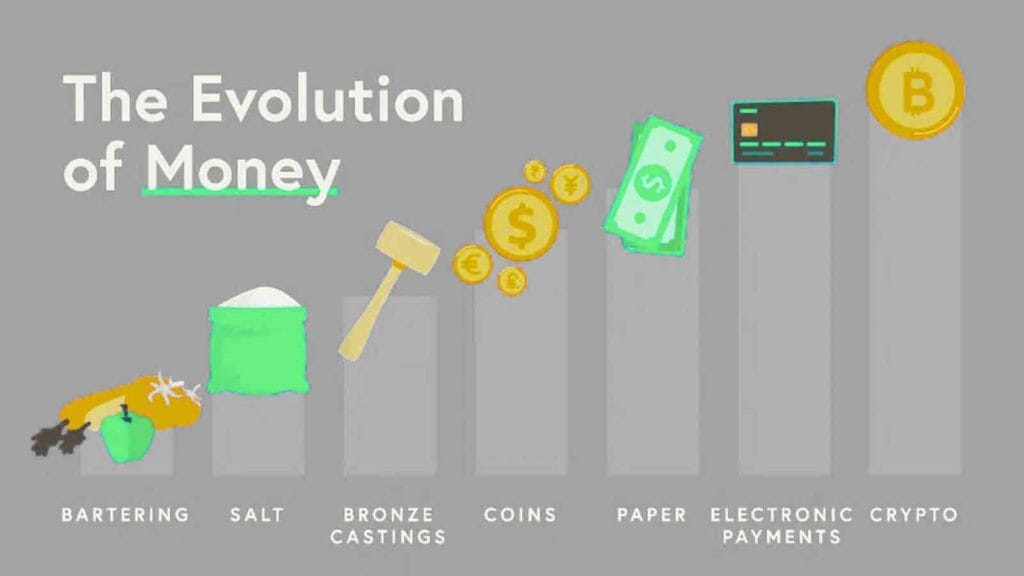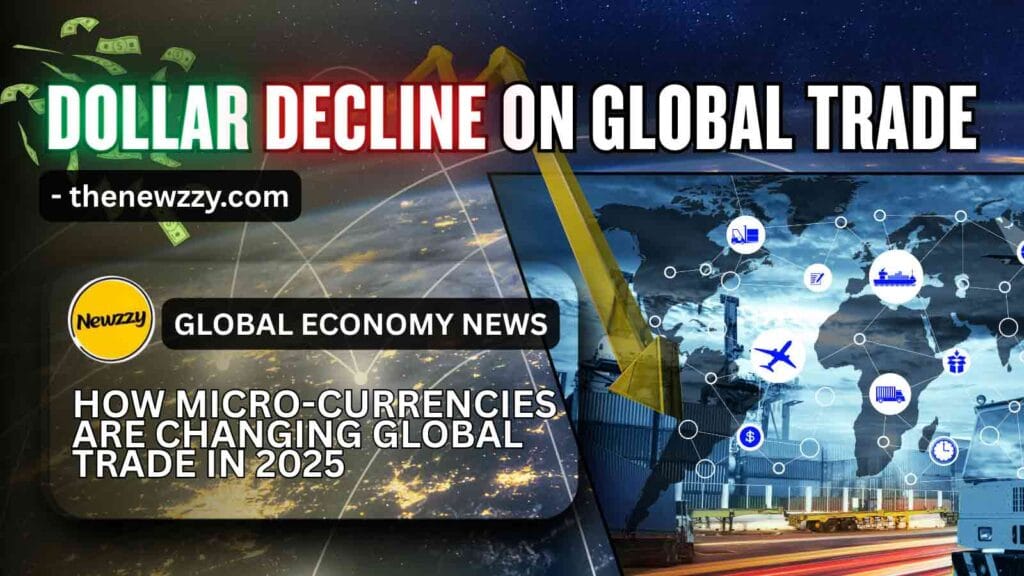Dollar Decline a silent revolution that global trade statistics is pointing to. The proportion of the US Dollar settlements in world trade and the central bank reserves has been reduced gradually, though not overwhelmingly, over the past 20 years. Though dollar is the most noticeable reserve and trade currency in the world, its almost unmatched status is being challenged by the sovereign and regional players, to a growing degree.
Read About: Decentralized Identity in Banking – The Future of Fraud Prevention | 2025 Report
Table of Contents
The Dollar’s Reign is Fading—But Slowly | Dollar Decline in Global Trade

Such financial multipolarity is demonstrated in recent strategic gambles played by blocs such as BRICS (Brazil, Russia, India, China, South Africa) as well as the members of the ASEAN (Association of Southeast Asian Nations) which are now considering alternative trade and payment systems to avoid going through the historical dollar-based architecture. Such efforts involve a debate on a possible BRICS settlement currency and local currency settlement systems development in ASEAN. Local currencies and the electronic trade systems are changing the global economics unobtrusively but at a very fast pace.
What Are Micro Currencies?
Definition of Micro Currencies: A micro currency (some call this in global trade, localized currencies) is a non-national or sub-sovereign currency that generally aims at trade, based on the concept that value in localized geographic or social or defined economic systems ought to be kept locally within a localized currency. They are not legal tender, as national fiat currencies tend to be, but are willingly adopted and circulate within a narrower, smaller radius, or to foster local resiliency or national financial obstacles.

These include community currencies (such as the Love Currency of Japan (e.g. the Fureai Kippu, a type of a social currency used to obtain elder care services) and regional trade tokens used within closed-loop economies. Various areas in China have regional tokens and points programs that contribute to consumption in an area of economic development.
In some regions of Africa, local credit system and local mobile money networks operate as informal local currencies, trading in local transactions and peer-to-peer payments where formal banking is unavailable or too expensive. They are characterized by a narrow focus and a certain agenda.
History of Money
The strategic idea of localised or regional currencies is not a new circumstance; it has strong historical foundations dating back to those periods when the standardization of national currencies was not a generally accepted norm. Prior to the 19th and 20th centuries, such local trading was often performed in barter, commodity-based receipts or by local script, offered by guilds, towns or other banks.

As an example, scrip money or emergency money was frequently circulated during times of economic hardship (such as the Great Depression) so that local economies would continue to operate, when national money was unavailable. Such structures were designed in such a way that they reduced reliance on remote and centralized financial authorities, and guaranteed that values flowed into the community. The historical background serves to prove that economic strength and localized wealth collection has always been a motivational process behind other media of exchange.
Digital Evolution of Micro Currencies
These concepts of localization have been on a digital evolution in the 21 st century. New technologies like decentralized ledgers and blockchain offer safe, transparent and immutable methods of issuing and managing micro-currencies. Such digital tokens may embody situations as basic as a conventional trade credit to the stablecoins correlated with a bag of commodities or local currency.
Moreover, the emergence of Central Bank digital Currencies (CBDCs) is an important factor, although it is sovereign. CBDCs, which will be the digital counterpart to a fiat currency of a country, will provide an infrastructure that will allow bypassing the traditional correspondent banking system to allow cross-border settlements between a country and its partners to become more direct and efficient a crucial step to local currency settlement in the absence of the middleman position of the USD. This cyber infrastructure is ultimately bearing the tracks on which localized trade can be carried on an international plane.
Why Countries are Declining Dollar in Global Trade?
It is a combination of political, economic, and technological factors, which makes it possible to call a gradual, but coordinated, shift of the global trade towards the rejection of the US Dollar as the default currency.

Political/ Economic Independence
The major reason is the need to achieve greater political and economic autonomy. The application of the dominance of the dollar to impose trade sanctions in the United States has shown to other nations, especially the geopolitical competitors and countries that demanded more autonomy, the reality of the risk involved in having their international settlements under the control of an external jurisdiction. Nations can shield the economy by paying with local or micro-currencies which helps them to avoid such political pressures.
Moreover, the dollar causes the countries to be faced with inflation risks that they do not have a say in the decisions of monetary policies made by the US. When the US Federal Reserve changes its interest rates or carries out quantitative easing, it causes a back ripple effect on the debt servicing cost and foreign reserves values of all dollar holding countries of the world. Lastly, the reliance of the transactions on the SWIFT system of global message taking offers only one it can be a point of failure and vulnerability when the tensions between the nations have been observed. De-dollarizing is therefore a policy necessity so as to re-establish monetary independence and economic stability.
Micro Currencies Case Studies
Major economic blocs are undertaking concrete precautions to make alternatives operational:
BRICS Exploring a Settlement Currency: The BRICS countries have debated publicly the establishment of a common settlement or reference currency, which can be a commodity-backed one (e.g. gold or a bundle of member commodities). Although the development of a full-fledged reserve currency is far away, the short-term objective is to boost bilateral trade in the currency of member states (e.g., rupee-ruble, yuan-real), and fewer of them will have to require USD. It is one of the essential steps to a multipolar financial world.
ASEAN Local Payment Linkage Program: The members of ASEAN have managed to establish a local currency settlement (LCS) pattern and are in the process of developing a Regional Payment Connectivity (RPC) project. It is meant to connect their domestic fast-payment technology (such as Thailand PromptPay, Singapore PayNow or Indonesia QRIS) so that local bank bank accounts can conduct instant, inexpensive and direct cross-border payment transactions without going through the traditional international clearing and using the dollar altogether as an intra-regional payment method.
Economist & Corporates Overview on Micro Currencies
Economists and international financial institutions are identifying and remarking this change:
IMF Report Insight: The dollar is not dead yet, but has the presidential share in the distributed global reserves declined over the last twenty years, indicating that the central banks are moving toward other currencies, which is accentuated by the geopolitical disintegration. Staff Discussion Note (summarized insight) of IMF.
Economist opinion on Sanctions: (Sanctions as weapons) imposed through sanctions has produced an insatiable need to find alternatives. On the receiving side of the U.S. foreign policy, the alternative cost is now too high the prices of not having one, and the region and the digital solutions are sought. The economic downturn of 2007/8 was caused by the subprime mortgage crisis, which severely impacted the economies of developed nations as well as economies in developing countries (Puchandaschallam, 2009).<|human|>The 2007/8 economic crash happened due to subprime mortgage crisis that had a dire effect on not only the economy in developed countries but also the economies of developing countries (Puchandaschallam, 2009).
World Bank/McKinsey on Digital Trade: “It is a structural departure to the past that national CBDCs have been adopted and that trade finance platforms based on blockchain have proliferated. The nature of these technologies is that they are more geared towards direct peer-to-peer, bank-to-bank interrelations that inherently undercut the need to have the dollar as a lingua franca of transactions. A comprehensive look at financial innovations worldwide shows that they have been adapted to align with every deaf or hard of hearing community and explain each innovation to its users, as well as, encourage educators on effective methods for instructing students in leveraging technologies.
With the overall analysis of financial innovations across the globe, it has been observed that it has been tailored to suit all deaf or hard of hearing communities and clarify all innovations to the user and motivate educators how to teach students how to utilize the technologies properly.
Localized Currencies Advantages
Adaptation of micro- currencies and local currency settlement systems is not a political initiative, it comes with real economic benefits, more particularly efficiency and resiliency.
Lowering Cross-Border Transactions
The fact that it achieves cheaper cross-border transactions is among the greatest advantages. Traditional correspondent banking system, which is dependent on the USD to a great extent, implies the use of several middle banks with their respective fees and time delay. This is referred to as the fx tax that is both expensive and opaque.
Due to direct settlements using local currency or the effective use of digital micro-currencies, the transactions may take place with a reduced number of intermediaries and may use the new technologies such as blockchain or fast-payment linkages. The savings that are possible can be great especially when the involvement is on small and medium-sized enterprises (SME) in high volume low-value payments.
Less dependence on Foreign Reserves
Local currency settlement will decrease the reliance of a nation on a foreign reserve which is the USD. To most of the developing and emerging economies holding a big sum of dollar reserves represents a costly insurance measure since in most cases they have to bypass more productive investments domestically. This is achieved by transacting a larger percentage of their imports and exports in the currency of their trading partners and as such, the liquidity in deeper dollar becomes less relevant. This will enable the central banks to control their currency values to a larger extent, and redeem their reserve assets to other more diversified or strategic reserves.
SMEs and Regional Trade Support
The adoption of local currencies is an effective instrument of promoting regional trade and SMEs. By allowing the small companies to trade among themselves using their own currencies or a local credit system, small businesses avoid the risk of exchange rate and low costs of executing a transaction (converting the transaction into the major reserve currency, such as USD). This is a significant entry obstacle to smaller companies trying to engage in cross-border business. By eliminating it this leads to more economic integration, more powerful regional supply chains, a stronger ability of SMEs, which in many economies are the pillars of those economies, in their international trade.
Challenges and Risks in Micro Currency Trading
Although the trend towards micro-currencies has some great benefits, the process is marked with so many challenges and risks that have to be mitigated to make the financial stability of the world.
Currency Instability & Volatility
Currency instability and volatility represent the greatest threat in the nearest future. Less liquid, smaller currencies especially those of emerging markets are more prone to enormous price fluctuations in reaction to domestic, or global economic shocks. Provided that a significant share of trade is covered by such currencies, but there is no well-developed and profound hedging markets, businesses are exposed to exponentially larger exchange rate risks that can eliminate profit margins and discourage long-run investment. By its localizing nature, micro-currencies are in a poor position to take up great volumes of trade without a strong shift in prices.
Global Banking Interoperability
One of the biggest technical challenges is relating to interoperability with the global banking system. To be effective on an international basis, the localized or regional payment systems should have the capacity to effectively communicate and interact with each other and with the existing global clearing systems. The absence of common standards, protocols, and regulatory framework may result in the development of a divided world of payment systems, and this is a new, inefficient digital Tower of Babel. Such a deficiency in standardization may actually make things more complicated and fail settlement more often, which may cancel out the efficiency benefits.
Cybersecurity and Regulation Issues
The transition to digital micro-currencies, in particular, those based on distributed ledger technology (DLT) or new central bank systems, poses significant cybersecurity and regulation issues. DLT systems are not only secure, but complex and introduce new attack vectors. There is a high possibility of massive digital theft, computer intrusion, or information breach on international payment systems. Regulatory On the regulatory level, the control of the compliance with Anti-Money laundering (AML) and counter-financing of terrorism (CFT) on a multitude of diverse rails distributed across countries needs to be reinvented through new international collaboration and well-developed, cross-border regulatory alignment that is still lacking.
The Future of World Trade in Local Currency World
It is now clear that the future of the global trade movement is strongly oriented at the decentralized and digitally mediated world. The gradual moribundity of the dollar is not that it will be supplanted by just one other competitor but that its degradation occurs as a part of a multipolar, technologically endowed financial environment.
Combination of CBDCs and Stablecoins.
The developmental barrier to a localized currency world is the strong connectivity between CBDCs and stablecoins. Through CBDCs, which are supported by the sovereign governments, the trust and finality of high-value international settlements can be offered. Pilot projects (as with Project mBridge provided by the BIS, also based on a multi-CBDC platform to conduct cross-border payments) already show the viability of near-instant payment at low costs between participating central banks.
At the same time, it is possible that regulated, fiat-backed stablecoins (usually pegged to domestic currencies or a currency basket thereof) will gain popularity as the daily corporate currencies and financial dealings of corporations, with the stability of fiat and the efficiency of blockchain combined. The integration will form a flexible financial layer, which will allow a local-currency exchange without the need to use USD as an intermediary.
Expert’s Analysis & Prediction About Micro Currencies Future
Global payment market Leading global institutions and consulting firms predict a major, but not complete, fragmentation of the global payment environment:
World Bank Model: World bank forecasts that in the next one decade, much part of cross-border trade among these emerging market economies will be paid off in a non-traditional combination of SWIFT/USD correspondent banking infrastructure and bilateral local currency transactions and local payment platforms. It is expected that this can move in favor of South-South trade.
McKinsey and Company Analysis: McKinsey points out that the emergence of Digital Trade Finance Platforms and distributed ledger technology will reduce the cost of trade documentation and trade verification by up to 50 percent. According to their models, these platforms will automatically experience a preference of local currency transactions as they become mature due to the cost-efficiency and the capacity of smart contracts to convert currencies transparently and instantly without necessarily having to use external liquidity providers (those who are usually dollar banks).
How Should Businesses Prepare?
Companies should be proactive within this new financial environment:
Diversification of Treasuries: Treasuries of a company have to diversify their currency assets, and they cannot afford to use the USD in international transactions only. It involves expanded capital investment in the owning major local trade partners currencies (e.g., CNY, INR, EUR) and opening local account in those jurisdictions.
Technology Investment: The companies must invest in new FinTech options that can connect to new payment rails in cases of CBDC networks, quick-payment connections, and blockchain-based trade sites. Multi-currency accounting and real time cross-border reconciliation require the remodeling of legacy systems of Enterprise Resource Planning (ERP).
Risk Management: Companies should come up with advanced hedging and risk management policies to non-major currency volatility. This would involve interacting with local financial institutions in major trading centers to seek local forward and futures contracts, rather than mere risks mitigation in terms of dollars.
Coming to an end: A decentralized future of finance
The world trade is in the silent and yet a fundamental process of decentralization. Technological innovation (CBDCs, DLT), geopolitical fragmentation (sanctions), and the need to save money (cost reduction) are coming together to undermine the power of the single reserve currency. It is not a future of one currency ousting another but of a very strong and multi-faceted net of linked, efficient and locally resistant micro-currencies and local payment systems. This decentralized promotional future is able to give more freedom, reduced costs of transactions and more sternness to concerned countries and their companies.
Subscribe to our site to keep getting updated about the innovation of trade, the adoption of digital currency and how businesses are adapting to this dynamic economy of the world.

